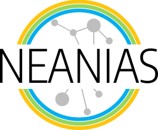The work “Novel Underwater Mapping Services through European Open Science Cloud” with the support of NEANIAS project, has been published in the SAO/NASA Astrophysics Data System.
Authors and affiliation
Karantzalos, Konstantinos (National Technical University of Athens, Greece ; Athena Research Center, Greece); Nomikou, Paraskevi (National and Kapodistrian University of Athens, Greece); Wintersteller, Paul (Teledyne Marine, Germany); Quintana, Josep (Coronis Computing, Spain); Baika, Kalliopi (Aix-Marseille Universite CNRS, France); Ntouskos, Valsamis (National Technical University of Athens, Greece); Lampridou, Danai (National and Kapodistrian University of Athens, Greece); Anbar, Jafar (Aix-Marseille Universite CNRS, France); NEANIAS Team Members (National and Kapodistrian University of Athens, Greece)
Abstract
Seafloor mapping is closely related to studying and understanding the ocean, which has increasingly raised interest in the past years. Coastal management, habitat loss, underwater cultural heritage, natural disasters, marine resources and offshore installations have underlined the need of charting the seabed. This upturn has been encouraged by many national and international initiatives and culminated in the declaration of the Decade of Ocean Science for Sustainable Development (2021-2030) by the United Nations, 2017. Novel Underwater cloud services offered through the EC H2020 NEANIAS project support this joint quest by implementing Open Science procedures through the European Open Science Cloud (EOSC). The services produce user-friendly, cloud-based solutions addressing bathymetry processing, seafloor mosaicking and classification. Hence, NEANIAS Underwater services target various end-users, representing different scientific and professional communities by offering three applications.The Bathymetry Mapping from Acoustic Data (UW-BAT) service provides a user-friendly and cloud-based edition of the well known open-source MB-System, via Jupyter notebooks. This service produces bathymetric grids and maps after processing the data throughοut a flexible and fit-for-purpose workflow by implementing sound speed corrections, applying tides, filters and choosing the required spatial resolution.The Seafloor Mosaicking from Optical Data (UW-MOS) service provides a solution for representing a large area of the seafloor, in the order of tens of thousands of images, and tackling visibility limitations from the water column. The service performs several steps like camera calibration, image undistortion, enhancement, and quality control. The final product could be a 2D image Mosaic or a 3D model.The Seabed Classification from Multispectral, Multibeam Data (UW-MM) service focuses on seabed classification by implementing cutting-edge machine learning techniques and at the same time providing a user-friendly framework. The service unfolds within four steps: uploading the data, selecting the desired seabed classes, producing the classification map, and downloading the results.Therefore, NEANIAS Underwater services exploit cutting-edge technologies providing highly accurate results, regardless of the level of expertise of the end-user, and reducing the time and cost of the processing. Moreover, the accessibility to sophisticated services can simplify and promote the correlation of interdisciplinary data towards the comprehension of the ocean, and the contribution of these innovative services is expected to be of high value to the marine community.
Publication:
EGU22, the 24th EGU General Assembly, held 23-27 May, 2022 in Vienna, Austria and Online. Online at https://egu22.eu/, id.EGU22-11661
https://ui.adsabs.harvard.edu/abs/2022EGUGA..2411661K%2F/abstract
